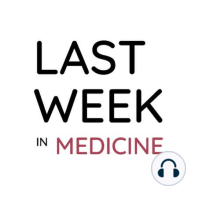24 min listen
Thrombosis and COVID-19
ratings:
Length:
17 minutes
Released:
Dec 29, 2020
Format:
Podcast episode
Description
Today I do a quick review of the COVID-19 thrombosis literature from the last year to try to answer some of the following questions: Why does COVID-19 cause thrombosis? How many patients with COVID-19 develop thrombotic complications? Why do patients with COVID-19 on VTE prophylaxis still develop blood clots? Should we use intermediate dosing of anticoagulation for prophylaxis? What about full dose therapeutic anticoagulation (no!) What do the guidelines say? Lots of papers:JAMA IM Review Autopsy Findings and VTE in Patients with COVID-19Klok et al Helms et alShah et alPiazza et alPorfidia et alKunutsor et alDutt et alStessel et alParanjpe et alFraisse et alMusoke et alPatel et alISTH GuidelinesACCP GuidelinesTake home points:COVID-19 is associated with an elevated risk of thrombosis. Observational data suggests that ICU patients are likely to develop thrombotic complications even on standard VTE prophylaxis. This number seems to be round 25%. Ward patients are also at higher risk (around 8-9%). Critically ill patients commonly develop heparin resistance, and this may partially explain why some patients with COVID develop thrombotic complications despite prophylaxis. Some have suggested intermediate dosing of anticoagulation for prophylaxis, but there are no randomized controlled trials published at this time, and observational data are limited. Some have suggested therapeutic dosing of anticoagulation for critically ill patients, but observational data show high rates of bleeding and other complications, and the three largest randomized controlled trials have stopped enrolling critically ill patients into the therapeutic anticoagulation arm due to safety concerns and futility. Some have suggested targeting a certain anti-Xa activity level, but no one really knows what that should be, and there aren’t any guidelines recommending it. ISTH and ACCP have both put out guidelines which are overall pretty similar.Make sure your patient has VTE prophylaxis, preferably a LMWH, and keep an eye out for thrombotic complications so you can treat them in a timely manner. Music from https://filmmusic.io"Sneaky Snitch" by Kevin MacLeod (https://incompetech.com)License: CC BY (http://creativecommons.org/licenses/by/4.0/)
Released:
Dec 29, 2020
Format:
Podcast episode
Titles in the series (57)
Vitamin D in Diabetic Kidney Disease and SGLT-2 Inhibitors for Heart Failure Reduced Ejection Fraction by Last Week in Medicine
